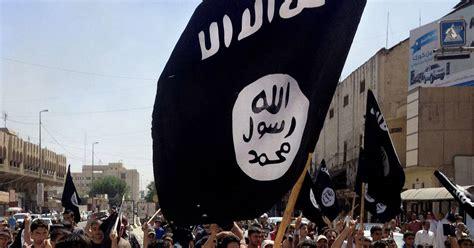
4000 Islamic State fighters gathered near Afghanistan border with Tajikistan says Kremlin officer
Some 4,000 Islamic State – Khorasan Province (ISIS-K) fighters are now stationed near Afghanistan’s border with Tajikistan, according to a Russian colonel-general.
The warning served by Anatoly Sidorov, Chief of the Joint Chiefs of Staff of the Moscow-led Collective Security Treaty Organization (CSTO), was reported by Afghanistan’s The Khaam Press News Agency.
Sidorov was cited as saying that the militant group poses threats to the security of Central and South Asia. Both Russian and Iranian officials have lately stepped up briefings to media that they believe the US is in favour of breeding instability in Afghanistan, a backyard country to both Russia and Iran. Washington denies having any such strategy. Should Russia face a challenge to regional security to its south from Islamic militant infiltration, it could conceivably tie up military resources that could otherwise be called up for the war in Ukraine. The CSTO is supposed to provide security for Russia, Belarus, Tajikistan, Kyrgyzstan, Kazakhstan and Armenia.
In a February 15 article published by Voice of America (VoA), the Taliban regime’s chief diplomat Amir Khan Muttaqi was reported as refuting Sidorov’s claims as baseless, saying: “How come thousands of such people are concentrated in one place and still no one can see them or is aware of them?”
Since the return of the Taliban to power in Afghanistan, ISIS-K militants have carried out brutal attacks in Kabul and various provinces of Afghanistan, claiming the lives of hundreds of innocent civilians and foreign diplomats.
Tajikistan has experienced cross-border rocket attacks from the militant group over the past year. There have been reports of Tajikistan press-ganging an army to defend its long, often porous, border with Afghanistan. Uzbekistan, meanwhile, which also shares a border with Afghanistan, last summer had difficulties with possibly rogue Taliban groups and in the late spring also appeared to suffer a cross-border rocket attack mounted by ISIS-K.
In March last year, bne IntelliNews reported on concerns that Afghanistan-based terrorist groups could destabilise Tajikistan and Central Asia in the wake of the US exit from Afghanistan that took place the previous August. And as the US completed that exit, this publication explored how Afghanistan was set to attract jihadists from far and wide, with the development also a threat to China. China’s Xinjiang Province has a 92-kilometre-long mountainous border with Afghanistan at the end of the Wakhan Corridor, a narrow strip of territory in Badakhshan Province of Afghanistan that also separates Tajikistan from Pakistan.
“Instability in the regions is directly linked to the Taliban’s policy to repress religious and ethnic minorities, increasing level of violence and lack of unity. The Taliban-run administration is currently plagued with a serious economic and humanitarian crisis,” Sidorov, who said he believed there were around 6,000 ISIS-K fighters in Afghanistan in all, was further quoted as saying by Khaam Press.
After the US departure from Afghanistan, the Kremlin responded to the Taliban takeover of the country by beefing up the largest permanent military base it has abroad, namely its base in post-Soviet Tajikistan. It has made some efforts to negotiate understandings with the Taliban—a Taliban delegation to Moscow was last year allowed to form an official presence there, for instance—but it is not clear much progress in building relations has been made.
Also since the US packed up and left Afghanistan, Tajik President Emomali Rahmon has given several warnings that thousands of militants were located near his country’s border with Afghanistan, stating in January last year: “Overall, according to the intelligence of Tajikistan, there are over 40 camps and terrorist training centres in Afghanistan’s northeastern provinces, which house over 6,000 militants.”
Rahmon has gone so far as to call for security “ring of steel” to be formed around Afghanistan, saying the country is more and more a nest of terrorists.
Persian-speaking, officially secular Tajikistan and the Islamic fundamentalist, primarily Pashtun Taliban are essentially foes, though, like Uzbekistan and Turkmenistan, Tajikistan continues to provide Afghanistan with electricity.
Tajiks make up the second-largest ethnicity in Afghanistan but have no representation in the Taliban’s Islamic Emirate of Afghanistan government. The leaders of the largely Tajik anti-Taliban National Resistance Front of Afghanistan (NRF) are thought to have sought refuge in Tajikistan after the Taliban takeover of Kabul. Like the NRF and Tajikistan, Iran takes a role in protecting the interests of the Persian-speaking minorities of Afghanistan.
Source: intellinews





